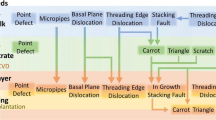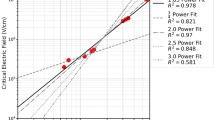Abstract.
Extended defects are often found after ion implantation and annealing of silicon and they are known to affect dopant diffusion. The article reviews the structure and energetics of the most often found extended defects and describes the mechanisms by which all these defects grow in size and transform during annealing. Defects grow by interchanging the Si atoms they are composed of and thus maintain large supersaturations of free Si interstitials in the region. A model has been developped to describe such an evolution in presence of a free surface. It is shown that after low energy implantation, the surface of the wafer may recombine large amounts of these free Si interstitials, driving defects into dissolution before transformation into more stable forms.
Similar content being viewed by others
Author information
Authors and Affiliations
Additional information
Received: 21 August 2002 / Accepted: 21 August 2002 / Published online: 12 February 2003
RID="*"
ID="*"Corresponding author. Fax: +33-56/2257-999, E-mail: claverie@cemes.fr
Rights and permissions
About this article
Cite this article
Claverie, A., Colombeau, B., de Mauduit, B. et al. Extended defects in shallow implants . Appl Phys A 76, 1025–1033 (2003). https://doi.org/10.1007/s00339-002-1944-0
Issue Date:
DOI: https://doi.org/10.1007/s00339-002-1944-0




